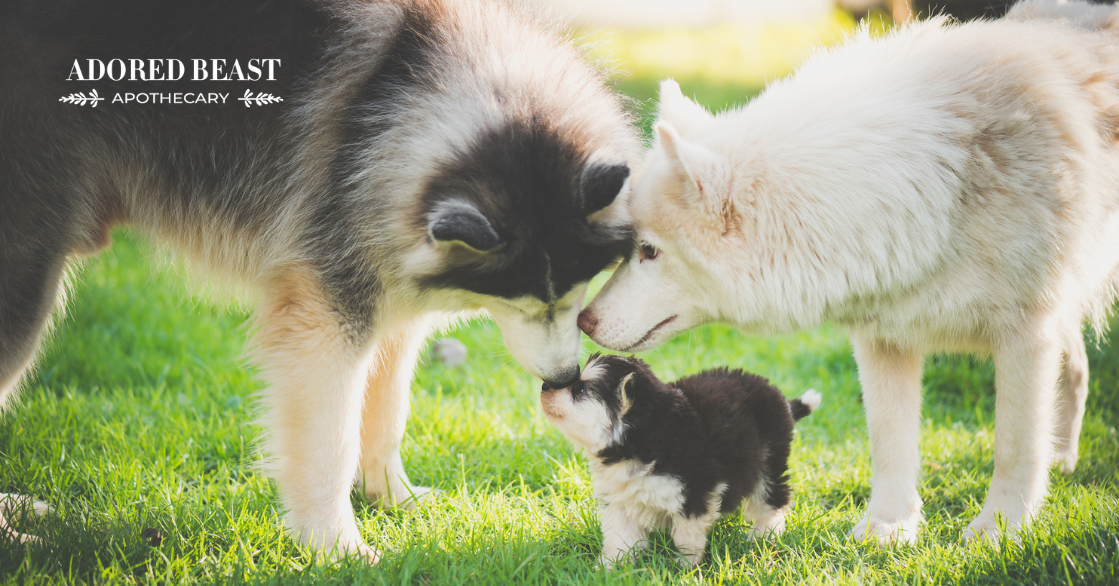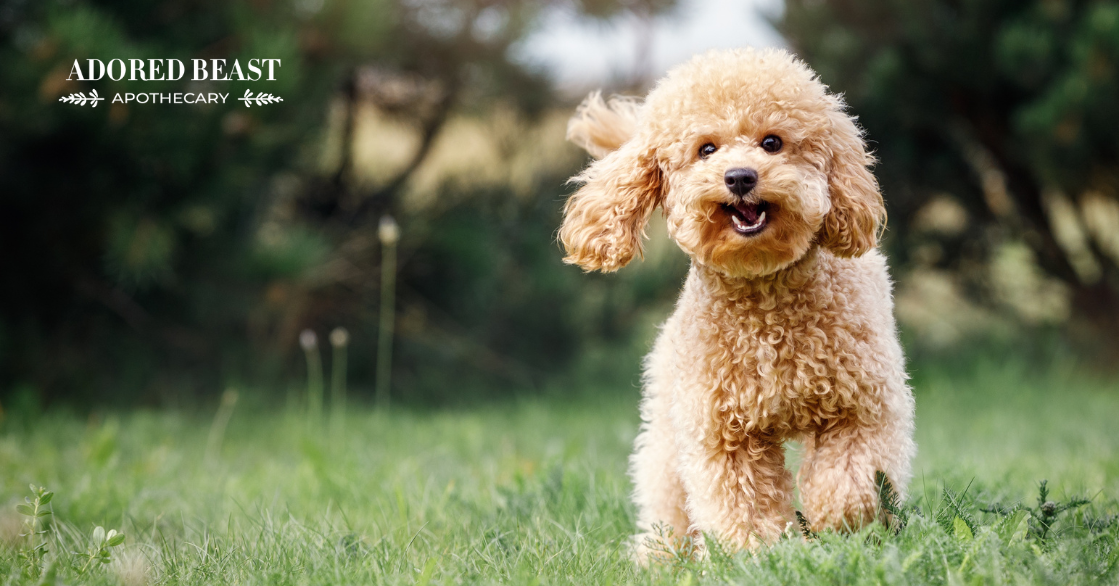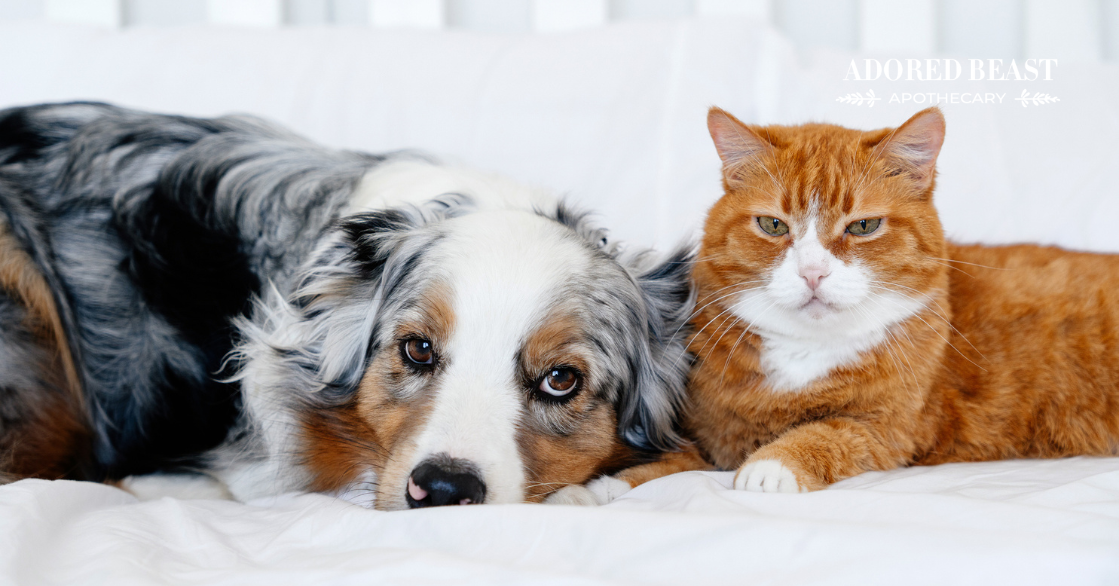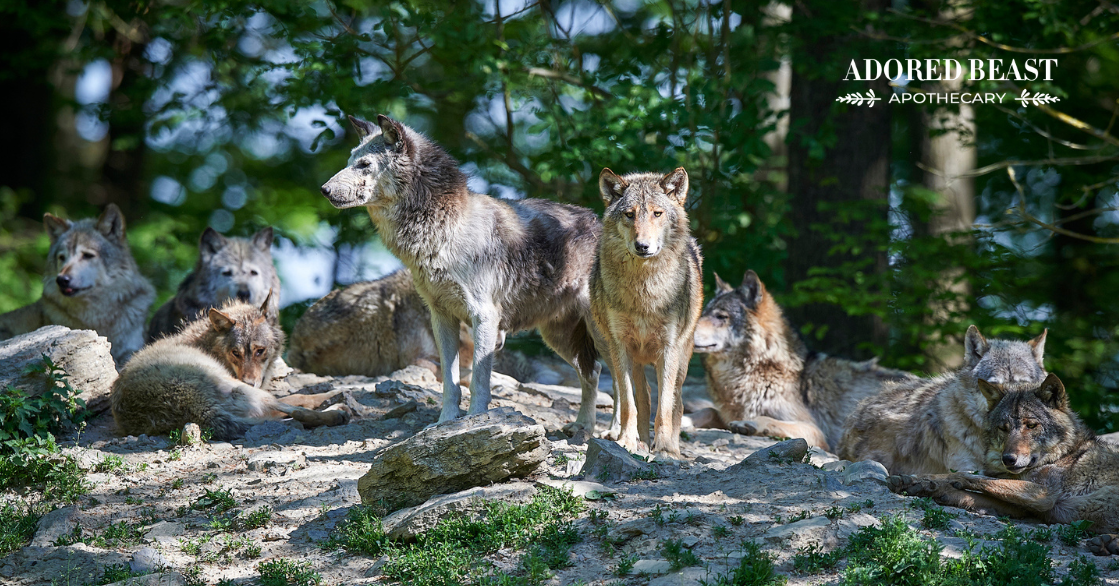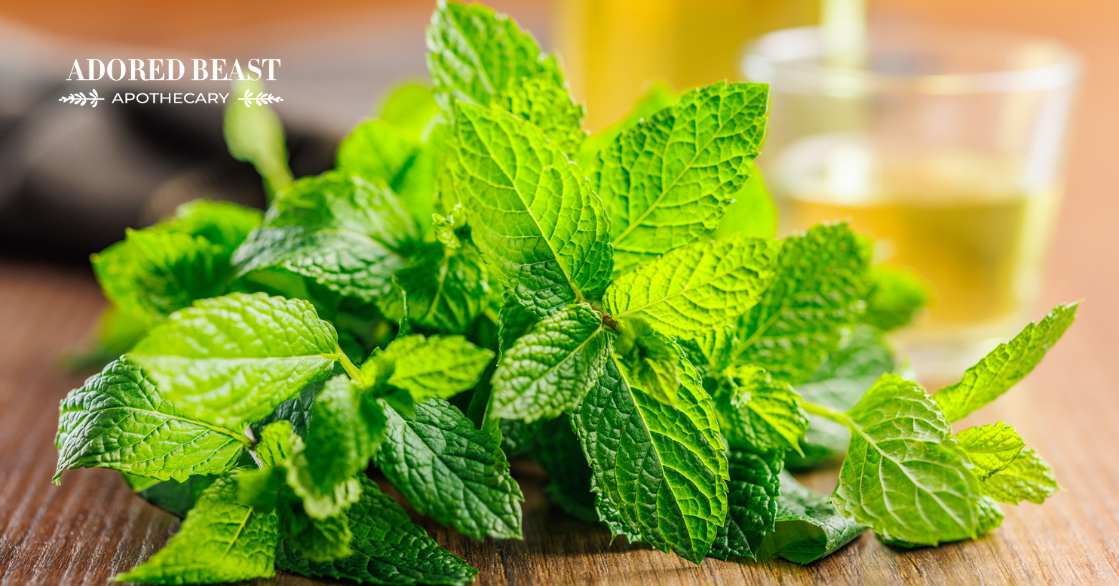I can almost guarantee that you’ve heard the old saying, “one dog year equals seven human years.” As children, my sister and I routinely calculated our dog’s age into human years based on this well-known myth.
But that’s the thing – it isn’t accurate – or at least not as simple as all that. It definitely doesn’t capture the aging process of our furry friends.
And this matters. Understanding how dogs age is essential for providing them with the proper care and attention as they grow.
So, how do you calculate dog years to human years, what impacts your dog’s longevity, and how can you provide them with what they need at every life-stage?
The Myth: One Dog Year Equals Seven Human Years
The idea that one dog year is equal to seven human years is a commonly held belief, but it’s far from accurate.
In fact, it changes over time; dogs age at different rates throughout their lives.
In their early years, dogs age faster, but it gradually slows down.
For example (and these are general – not exact):
- The first year of a dog’s life is roughly equivalent to 15 human years (whoa!)
- The second year is about 9 human years.
- Every year after that is approximately 5 human years.
So, as an average calculation of dog years to human years, if your pup is 5 years old, they would be approximately 39 in human years (15 + 9 + 5 + 5 + 5).
Of course, as mentioned, different factors play into this calculation, including how big your dog is…
How Size Impacts Dog Years to Human Years
Your dog’s size plays a significant role in determining their lifespan. Generally, smaller dogs tend to live longer than larger breeds.
Small Breeds: Small dog breeds, such as chihuahuas, dachshunds, and shih tzus, typically have longer lifespans. Many small dogs can live well into their teens, with some reaching 15 to 18 years or more.
Medium Breeds: Medium-sized dogs, including beagles, bulldogs, and cocker spaniels, pitbulls, often have an average lifespan of around 10 to 13 years. However, individual genetics, diet, and exercise play a significant role in determining how long they live.
Large Breeds: Large dog breeds, such as golden retrievers, German shepherds, and labs tend to have shorter lifespans compared to smaller dogs. Most large breeds live between 7 to 10 years, with some reaching 12 years or more. Their size makes them more prone to specific health issues, including joint problems, which can impact their longevity.
Giant Breeds: Giant dog breeds, like great danes, saint bernards, and Newfoundlands, Irish wolfhounds, and mastiffs, have the shortest lifespans. Their massive size often results in a lifespan of 6 to 10 years.
**Your dog’s genetic makeup also plays a significant role in determining their lifespan. If your dog comes from a line of long-lived ancestors, they are more likely to live longer!
Helping Your Dog Live Their Longest, Healthiest, Happiest Life Possible
We all want our pups to live as long as possible. And while size and genetics play a role, how we support them is also important.
Thankfully, there are many things that we can do to help keep them healthy and happy for as long as possible!
Let Dogs Be Dogs
We’re putting this first on the list because we believe it is so very important. However, in all the talk of health, sometimes this component – and letting dogs be dogs – gets lost.
This may sound silly – after all, what else would they be – but sometimes we forget what it means! Dogs need to be able to run, to sniff, to bark, to jump, to roll in dirt, to eat gross things… We have to let them exercise their natural instincts. As much as possible, allow your dog the freedom to just “be” themself. Allow your dog access to their own free will. Give them a chance to make choices. If they’re interested and it’s safe, let them interact with other dogs. Try not to curb those things that bring them joy!
Additionally, give them access to a safe space to run off leash, at least some of the time. Let them out in nature: the sights, the sounds, the smells. Allow them to sniff on a walk.
This is how they paint a picture of their world and develop a sense of security and self and where they fit into the world around them.
Furthermore, honour the breed. Different breeds have different needs. Learn their histories, learn their needs. Make sure you are providing your dog with what they need. Working dogs aren’t lap dogs, and lap dogs aren’t guard dogs, etc. Each breed has different physical and emotional needs, so do your research and give them the attention they require that meets those needs.
Happiness & Connectivity
Happiness is so important as well. We want to ensure that they’re content in their life and their environment. Spend time each day connecting with your animal. Sit with them, talk to them, play with them. They long for that sense of connection, and it not only feels good for both of you, it lets them feel safe and love. Leave your cellphone at home or turned off when walking them. Understand what loving your dog really means from the dog’s point of view. No matter their age, this is vital to overall health and wellbeing.
Furthermore, recognize that all dogs, to a certain extent, are pack animals. We become their pack once we invite them into our home and our lives. Regardless of how independent they might be, they need their pack to be happy. If they’re left alone for extended periods of time, this can lead to feelings of isolation and depression, which can have physical and mental health impacts. Be mindful that we need to commit to their lifelong needs, including spending ample time with them as their pack family.
Diet and Nutrition
Providing your dog with a balanced and nutritious diet is essential for their overall health and longevity. Proper nutrition can help prevent obesity and reduce the risk of various health issues.
We’re big believers in feeding fresh, whole food, either as the primary food or even just adding some fresh to the bowl. That means raw meats (and a variety of proteins) – muscle meat, organ meat, and bone, and fruits and vegetables. We like to consider what an ancestral diet would have looked like, and although our dogs have evolved, we try to incorporate those ideals into what we feed. Fresh, whole food provides a wealth of vitamins, minerals, amino acids, fats, and more, much of which is much more bioavailable and not processed. (With fresh foods, try to find things grown as close to you (local) as possible, and organically too!).
Don’t forget nutritional supplements!
- Support a healthy digestive system with pre and probiotics. Supplement blends like our Love Bugs, Fido’s Flora, or The Wolf are easy to give and rotate. If you’re a kibble-feeder, we especially recommend our Healthy Gut because of the additional digestive enzymes that help to make food more nutritionally bioavailable.
- You can also rotate in different gut boosting foods like kefir, fermented vegetables, and bone broth!
- Provide antioxidants to help fight free radicals (the unstable atoms that do major damage to cells, leading to oxidative stress). Fresh berries, apples, bananas, broccoli, spinach, and cabbage are all good choices. Phytoplankton is a major winner when it comes to antioxidants, as are chaga and turkey tail mushrooms.
- Omega 3s are great for supporting the whole body, including the joints, the brain, and the heart. Algae oil is a good choice for its high DHA content.
Maintaining a Healthy Weight
As mentioned, we want to prevent obesity. 54% of dogs in North America are considered obese, so this is a concern for all pet parents. Obese dogs may be more at risk for certain health conditions, and weight definitely impacts the joints and tendons, especially as our dogs age. We want to keep them at a healthy weight, no matter their age.
Food plays a big role, so try to avoid processed food. Consider a fresh, whole food diet when possible. Try to incorporate healthy options, such as fruits and vegetables, into the diet. You can even use these last treats to keep the daily calorie count down!
Exercise and stress are two other things that can impact weight – and we’ve covered both below.
Exercise and Activity
Regular exercise is essential for maintaining a dog’s well-being. And, as mentioned, it can also help prevent obesity and extend their lifespan. Really, it’s as simple as, if you want to keep moving, you have to keep moving. How we move might change, but the movement is still there.
Physically, regular exercise helps to keep the joints, muscles, tendons – the whole body, really – limber and flexible. Just be sure you’re paying attention to what kind of exercise is right for your dog.
For example, for puppies, too much too early can be detrimental. Don’t push a young, developing puppy too hard. Large breed puppies grow quickly but mature slowly, so hold off on excessive activities like agility until they are fully grown. In contrast, smaller breeds mature more quickly, but they tend to have less tolerance for high-level exercise.
And for seniors, exercise is still very important. It keeps the joints and muscles limber and flexible. Just keep in mind that some exercises can do more harm than good. Middle-aged and senior dogs may find certain activities too hard on their joints. If your pet is older, or if arthritis is a concern, perhaps break up long walks into a few shorter walks during the day. Swimming – if they like it – is an excellent way to keep them active. Avoid overexerting your senior pet or asking them to do too much.
And it isn’t just about physical activity. Just like with people, if your animal isn’t using their brain, they can lose some of the higher functions, like problem solving for example. No matter your pet’s age, engaging the brain helps to slow neurological aging and keep the mind sharp.
There are several things you can do:
- When on your daily dog walks, switch up the route
- Every so often, drive somewhere new to explore
- Do puzzle games that your dog has to solve – these are great for exercising the brain!
- Teach a new trick each week
- Play with your pet – talk to them, throw balls, chase them (if they like that), play hide-and-go-seek
- Enroll your dog in agility classes
- Consider a compatible friend if you only have a single dog
You may be doing this for your pup, but just because you love and adore your dog and want them to live a long healthy life, YOU also ultimately get more exercise, you develop more brain capacity, can prevent age related brain disease or mental health issues at any age andhave a way better chance of having that furry kid of yours in your life a much longer time.
Stress and Environment
Ongoing stress is not good for anyone, including our animals. A calm and stress-free environment can contribute to a longer, happier life for your dog. Reducing stressors in their life and providing a safe, comfortable space is important.
Remember, boredom and isolation lead to anxiety and stress, which then lead to chronic high levels of cortisol. This can lead to both obesity and/or chronic disease. Try to reduce boredom by engaging the brain – use some of the tips above, including puzzle games and teaching tricks.
Additionally, work on your own stress. Our dogs have a profound ability to feel our stress. When we’re feeling anxious, they know it. By working to bring down those levels, we can help create a peaceful – and thus, healthy – environment!
Recognize Needs at Each Age
As humans, we know that our bodies need different things as we get older. It’s important to recognize this with our dogs as well!
By recognizing our animals’ individual needs at each life-stage, we can provide the best support and care.
Food is the perfect example. In some ways, puppies require a different diet than seniors. They may also require more food, and a different feeding schedule. It’s important to note the difference to provide your puppy with the best food to build a foundation for health right from the very beginning. And, as they get older, our dogs often need a little more support – and sometimes that support is different.
For more on puppy and senior specific care, check out these posts:
Puppy Tips: How to Prepare for the New Addition
Caring for a Senior Dog: Important Pieces of Advice
As you can see, calculating dog years to human years is far more complex than the outdated one-to-seven rule. Size, breed, genetics, and lifestyle all play a crucial role in determining a dog’s longevity. Thankfully, as pet parents, we can help provide the best possible care for our canine companions, regardless of their size, to ensure they lead healthy and fulfilling lives.
And realistically, no matter your pet’s age, breed, size, or activity level, the most important thing is to celebrate each day, in every way. Be present, live in today, revel in the moment. Stop worrying about how long they’ll live, and celebrate the being and the living together right now, as it’s happening.

